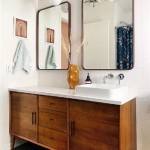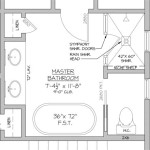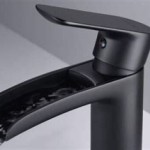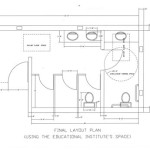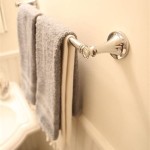Moroccan Bathroom Sink Cabinets: A Fusion of Functionality and Artistic Expression
Moroccan bathroom sink cabinets represent a distinctive blend of practicality and aesthetic appeal, drawing inspiration from the rich cultural heritage and artistic traditions of Morocco. These cabinets serve not only as storage solutions for bathroom essentials but also as focal points that infuse warmth, character, and a touch of exotic elegance into the bathroom space. characterized by intricate designs, vibrant colors, and the use of natural materials, Moroccan-inspired cabinets offer a unique alternative to conventional bathroom furniture, appealing to homeowners seeking to create a visually stunning and personalized bathroom environment.
The allure of Moroccan bathroom sink cabinets lies in their ability to seamlessly integrate functionality with artistic expression. They provide ample storage space for toiletries, towels, and other bathroom necessities, helping to maintain a tidy and organized space. Simultaneously, these cabinets embody the spirit of Moroccan design, featuring handcrafted details, geometric patterns, and a harmonious blend of colors and textures that evoke a sense of warmth and tranquility. The handcrafted nature of many Moroccan sink cabinets means that each piece is unique, further enhancing its appeal and adding a touch of exclusivity to the bathroom.
The design of Moroccan bathroom sink cabinets is heavily influenced by traditional Moroccan architecture and craftsmanship. Common design elements include intricate wood carvings, colorful tile inlays (zellij), and the use of natural materials such as wood, metal, and stone. These elements are often combined to create visually striking cabinets that reflect the beauty and complexity of Moroccan art. The use of geometric patterns, such as those found in Islamic art, is prevalent, adding a layer of visual interest and cultural significance to the cabinets. Furthermore, the application of hand-painted finishes and distressed textures contributes to the unique character and charm of Moroccan bathroom sink cabinets.
Key Point 1: Characteristics and Materials
Moroccan bathroom sink cabinets are distinguished by several defining characteristics that set them apart from standard bathroom furniture. The use of natural materials is a central aspect of their design. Wood, often cedar or other durable hardwoods, is frequently employed for the cabinet's frame and structure. The wood is often intricately carved with geometric patterns or floral motifs, showcasing the skill and artistry of Moroccan craftsmen. The use of metal, particularly brass or copper, is also common, adding a touch of elegance and sophistication to the cabinets. Metal accents may be used for handles, hinges, or decorative inlays, enhancing the cabinet's overall aesthetic appeal.
Another defining characteristic of Moroccan bathroom sink cabinets is the incorporation of colorful tile inlays, known as zellij. Zellij is a traditional form of Moroccan mosaic art that involves the use of intricately cut and glazed ceramic tiles to create complex geometric patterns. These tiles are often used to decorate the cabinet doors, countertops, or backsplashes, adding a vibrant splash of color and visual interest to the bathroom. The tiles are typically arranged in geometric patterns such as stars, polygons, and arabesques, reflecting the influence of Islamic art and design. The colors used in zellij tilework are often rich and saturated, including shades of blue, green, yellow, and red, evoking the warmth and vibrancy of the Moroccan landscape.
The finishes applied to Moroccan bathroom sink cabinets also contribute to their unique character. Hand-painted finishes are common, allowing for the creation of customized designs and color palettes. These finishes may incorporate traditional Moroccan motifs, such as floral patterns, arabesques, or calligraphy. Distressed textures are also often used to add a sense of age and authenticity to the cabinets, giving them a rustic and timeworn appearance. The combination of natural materials, intricate tilework, and hand-applied finishes creates a visually stunning and unique piece of furniture that serves as a focal point in the bathroom.
Key Point 2: Design Styles and Variations
The design of Moroccan bathroom sink cabinets encompasses a wide range of styles and variations, reflecting the diverse artistic influences and regional variations found throughout Morocco. Some cabinets are characterized by their ornate and elaborate designs, featuring intricate wood carvings, colorful tile inlays, and hand-painted finishes. These cabinets often evoke a sense of opulence and luxury, adding a touch of grandeur to the bathroom. Other cabinets are more understated and minimalist in their design, featuring clean lines, simple geometric patterns, and a more subdued color palette. These cabinets are well-suited for contemporary or modern bathrooms, adding a touch of Moroccan flair without overwhelming the space.
One popular variation of Moroccan bathroom sink cabinets is the Riad style, inspired by the traditional courtyard houses of Morocco. These cabinets often feature a central basin area surrounded by storage compartments or shelves, mimicking the layout of a Riad courtyard. The Riad style cabinets may incorporate elements such as arched doorways, decorative columns, and tiled courtyards, further enhancing their resemblance to traditional Moroccan architecture. The use of natural materials such as wood, stone, and terracotta is also common in Riad style cabinets, adding to their authentic and rustic charm.
Another variation of Moroccan bathroom sink cabinets is the Moorish style, which draws inspiration from the Moorish architecture and art that flourished in Spain during the Middle Ages. Moorish style cabinets often feature intricate geometric patterns, horseshoe arches, and decorative stucco work. The use of vibrant colors, such as deep blues, greens, and golds, is also common in Moorish style cabinets, reflecting the influence of Islamic art and design. These cabinets evoke a sense of history and grandeur, adding a touch of exotic elegance to the bathroom.
Key Point 3: Integration into Bathroom Decor and Functionality Considerations
Integrating Moroccan bathroom sink cabinets into the overall bathroom decor requires careful consideration of the existing color palette, architectural style, and functional needs of the space. These cabinets, due to their bold character, should be used in harmony with other elements, not as the main focus. If the bathroom already features a strong color scheme or architectural style, it may be best to choose a Moroccan cabinet that complements these elements rather than clashes with them. For example, a bathroom with a neutral color palette may benefit from a Moroccan cabinet with vibrant colors and intricate patterns, while a bathroom with a more subdued color scheme may be better suited to a cabinet with a more understated design.
In terms of functionality, it is important to consider the storage needs of the bathroom when selecting a Moroccan sink cabinet. The cabinet should provide ample storage space for toiletries, towels, and other bathroom essentials, helping to maintain a tidy and organized space. The layout of the cabinet should also be considered, ensuring that it is easily accessible and convenient to use. For example, a cabinet with multiple drawers and shelves may be more practical than a cabinet with a single large compartment. The size of the cabinet should also be proportional to the size of the bathroom, ensuring that it does not overwhelm the space.
The choice of sink and faucet also plays a role in the overall aesthetic and functionality of the bathroom. A vessel sink, which sits on top of the cabinet, can be a stylish and eye-catching addition to a Moroccan bathroom sink cabinet. Vessel sinks are available in a variety of materials, such as ceramic, glass, and metal, allowing for customization and personalization. The faucet should also be chosen to complement the style and finish of the cabinet and sink. A brass or copper faucet can add a touch of elegance and sophistication to the bathroom, while a more contemporary faucet can create a more modern and eclectic look. Proper installation of the sink and faucet is essential to ensure their functionality and prevent leaks or other problems.
Beyond the core functionality, maintenance is a crucial consideration. The cabinet's materials should be durable and easy to clean, able to withstand the humidity and moisture of the bathroom environment. Regular cleaning and maintenance will help to preserve the beauty and longevity of the cabinet. This may involve wiping down the cabinet with a damp cloth, applying a sealant to protect the wood, or polishing metal accents to prevent tarnishing. Ignoring routine maintenance can lead to damage and ultimately reduce the lifespan of the cabinet.

Handmade Bone And Resin Moroccan Bathroom Sink Vanity Cabinet Israel

Risultati Immagini Per Moroccan Sink Vintage Bathroom Tile

Blue Moroccan Bathroom Sink Vanity Cabinet This Is The

Moroccan Style Bathroom In Cape Cod Massachusetts Styling

Mosaic Sinks And Vanity Cabinets Sink Diy Bathroom Room Tiles

Moroccan Vanity Mediterranean Bathroom Santa Barbara By Maraya Interior Design Houzz
Moorish Bathroom Vanity Cabinet

Black Moroccan Star Bath Cabinet Doors Design Ideas

Black Moroccan Style Bath Vanity Mediterranean Bathroom

Fez Handmade Moroccan Bathroom Sink Vanity Clay Pottery Wash
Related Posts
